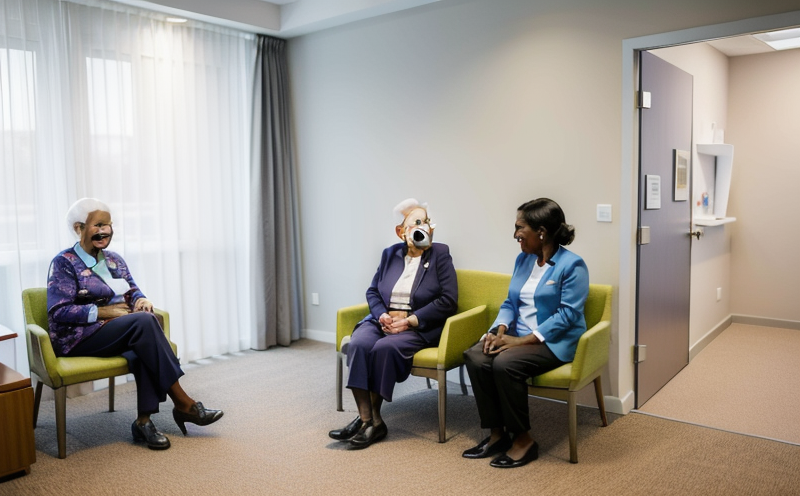Alyth’s Beloved Shopkeeper Honoured as High Street Hero for Five Decades of Service

Alyth is buzzing with pride after one of its most cherished residents, 85-year-old Margaret Ferguson, was officially recognised as a ‘High Street Hero’ for her extraordinary dedication to local commerce. Margaret, who has been the heart and soul of MM Ferguson on Commercial Street for an incredible 53 years, received the prestigious award in the Mid Scotland and Fife category of this year’s Scotland Loves Local Awards. This remarkable achievement highlights her unwavering commitment to serving her community for over half a century. For many in Alyth, Margaret’s shop is more than just a place to buy goods; it’s a vital community hub where neighbours connect, stories are shared, and a friendly face is always guaranteed. In an era where many independent businesses struggle to maintain their presence, Margaret’s enduring store stands as a testament to resilience and the profound value of personal service. The judging panel for the awards noted her establishment as a “reliable source of quality produce,” a beacon of stability amidst the changing landscape of local retail. A Legacy of Community and Commerce in Perthshire Margaret’s journey as a shopkeeper began over five decades ago, a period during which Alyth, like many towns across Perth and Kinross, witnessed significant shifts in its economic and social fabric. Her ability to not only survive but thrive for so long is a rare feat, underscoring her deep understanding of her customers’ needs and her personal touch. The enduring presence of MM Ferguson provides a sense of continuity for generations of Alyth residents, embodying the spirit of community that small towns across Perthshire strive to preserve. Speaking about the recognition, Margaret expressed genuine surprise and humility. She conveyed that her work never felt like a burden, but rather a source of joy. “It’s quite humbling,” she commented. “All I’ve done is come to work and run my shop, which is something I enjoy. It’s like a hobby to me. It doesn’t feel like work.” This sentiment resonates deeply with the ethos of the Scotland Loves Local campaign, which celebrates the individuals and businesses that form the backbone of their communities. More Than Just a Shop: A Pillar of Alyth Life The shop’s role extends far beyond its commercial offerings. Margaret’s open-door policy for conversation and camaraderie has transformed MM Ferguson into an unofficial community centre. “Some people say my shop’s like a community centre. I’m here and if people want to come in for a chat, then they can do that,” Margaret shared. “Many of my customers are friends. I’ve had many happy years here.” This human element is what truly sets local businesses apart, fostering connections that strengthen the social fabric of places like Alyth. Her store serves as a model for how high street establishments can be invaluable assets, enriching the lives of those they serve beyond mere transactions. The Scotland Loves Local Awards, spearheaded by Scotland’s Towns Partnership (STP) with the support of the Scottish Government, are now in their fifth successful year. The initiative actively encourages people across the country to support their local economies and champion the unique character of their towns and villages. The recognition of individuals like Margaret Ferguson serves as a powerful inspiration for other communities in Perth and Kinross to nurture their high streets and celebrate their local heroes. Kimberley Guthrie, Chief Officer of STP, perfectly encapsulated Margaret’s impact: “People make places – and people like Margaret are part of the fabric of our communities. The years of commitment she has shown to Alyth make her a very worthy recipient of our High Street Hero award for Mid Scotland and Fife.” This award not only honours Margaret’s personal dedication but also shines a spotlight on the importance of sustaining local businesses in Perthshire. Her story is a vibrant reminder that in an increasingly digital world, the warmth and personal connection offered by local shopkeepers remain irreplaceable, contributing significantly to the well-being and identity of our cherished communities.
Former Prison Officer Sentenced for Sexual Assaults in Perthshire Facilities

A former prison officer, who previously worked as a dog handler, has been handed a significant sentence following his conviction for sexually assaulting multiple female colleagues. The incidents occurred at HMP Perth, HMP Castle Huntly near Longforgan, and Fauldhouse Prison, raising serious concerns about workplace conduct within the Scottish Prison Service. Simon Buck, 57, was brought before Perth Sheriff Court for his actions, which included an inappropriate comment and physical assaults. His victims bravely came forward after his earlier conviction last year for similar misconduct involving a male colleague at a different correctional facility. Details of the Offences Unveiled in Court During the proceedings, fiscal depute Katie Stewart outlined the nature of the offences. Buck, who held a position of trust as a dog handler and instructor, engaged in a pattern of unwelcome behaviour. The court heard how a misconduct inquiry within the Scottish Prison Service initially flagged these issues, leading to a police investigation in January 2024. One of the female victims, who had known Buck for several years through their employment with the SPS, recounted two distressing encounters. The first took place on September 7, 2022, during a training day at HMP Castle Huntly. After a team photograph, Buck singled her out to take an individual picture with her dogs. He then made an “appalling” and sexually explicit comment, which deeply disturbed the woman, prompting her to challenge his behaviour immediately. Unapologetic Conduct at HMP Perth Weeks later, in November 2022, the same victim encountered Buck while on shift at HMP Perth. She described entering the security office to find him present. Once other staff members had left the room, Buck seized the opportunity to approach her, striking her forcefully on the right buttock with his left hand. The woman again confronted him, issuing a clear warning never to touch her again. Remarkably, Buck displayed no remorse or emotion, offering no apology for his alarming actions. A third incident involved another female SPS worker at HMP Fauldhouse on January 9, 2023, where Buck was an instructor for a dog licensing course. During a refreshment break, as the victim walked to the bathroom, Buck unexpectedly appeared, putting his arm around her neck and pulling her into an office. He then kissed her on the cheek and declared, “You know that I really love you.” The victim was left speechless and profoundly shocked by the unsolicited advance, immediately retreating to a locked cubicle to process what had transpired. Judicial Response and Community Impact All three incidents were reported to Police Scotland, culminating in Buck’s arrest in August of the previous year. His defence solicitor, Alan Davie, acknowledged that while there was a degree of minimisation in his client’s pre-sentencing report, Buck did recognise the detrimental impact his conduct had on the complainants. Mr. Davie also highlighted that Buck’s mental health had reportedly deteriorated since the allegations surfaced, and he was actively seeking support for these issues. Sheriff Mark O’Hanlon strongly condemned Buck’s actions, noting the numerous offences and the betrayal of trust within the workplace. The judge specifically singled out the initial comment made at Castle Huntly as “appalling.” He emphasized that these new convictions followed a previous similar offence involving a male colleague, indicating a pattern of behaviour. Recognising that the offences warranted a custodial sentence, Sheriff O’Hanlon opted for a rigorous community-based alternative. Buck received a two-year supervision order and was mandated to participate in the ‘Moving Forward 2 Change’ programme, specifically designed for sex offenders. Additionally, he was ordered to complete 270 hours of unpaid work and will remain on the sex offenders register for two years. The Scottish Prison Service has reiterated its commitment to supporting victims, stating, “We recognise the profound and lasting impact such crimes have on survivors.” This case serves as a stark reminder of the importance of maintaining professional boundaries and the severe consequences for those who violate them, particularly within public service roles operating in the Perth and Kinross area and beyond.
Perth Photo Lab Rebuilds on George Street After Devastating City Centre Fire

A cherished Perth establishment, Perth Photo Lab, is successfully navigating a new chapter on George Street, thanks in no small part to the overwhelming support of the local community. The business, under the stewardship of owner Shaun Ward since 2022, carries a legacy of providing photographic services to the city for over half a century, making it a truly integral part of Perth’s heritage. The journey to its current location was prompted by the devastating fire that swept through Scott Street in June. This tragic event brought immense disruption and sorrow to the heart of Perth, claiming lives and leaving many residents and businesses facing prolonged uncertainty about their future. The extensive damage meant Perth Photo Lab’s former premises became inaccessible, forcing an immediate and significant change for the long-standing enterprise. The fire’s widespread impact reverberated throughout the local economy, affecting numerous small businesses and the daily lives of countless individuals who lived and worked in the affected area. A Community United in Support In the immediate aftermath of the inferno, the prognosis for the Scott Street area was grim, with estimates suggesting closures could last for many months. Faced with this challenging reality, Shaun acted swiftly and decisively. He secured a new unit on George Street within a matter of days, showcasing remarkable entrepreneurial spirit in the face of adversity. This rapid relocation marked not just a change of address, but a determined effort to rebuild and ensure the continuation of a valuable local service that many in Perth had come to rely on. Shaun expresses profound gratitude for the outpouring of support from the Perth community. “The city truly rallied around us,” he recounts, highlighting the tangible sense of solidarity. This collective spirit manifested in various forms, from local patrons actively spreading the word about the new location to a highly successful gift card initiative launched early on. This thoughtful gesture provided crucial financial support to help the business restart, proving indispensable during the arduous transition period and demonstrating the strong bonds within the city. Relocating a well-established business is no easy feat, especially when it involves moving specialised, delicate equipment and re-establishing customer flow. Shaun dedicated himself to the painstaking process of retrieving and transferring the essential tools of his trade from the former Scott Street shop, a task he only recently completed. The physical move also presented a shift in trading dynamics; George Street, while a bustling and historic thoroughfare known for its diverse independent shops and vibrant atmosphere, is not as centrally located as the previous Scott Street spot. This difference necessitates an adaptation to a new kind of passing trade, requiring proactive efforts to inform and attract customers. Re-establishing Roots on George Street Despite these challenges, Perth Photo Lab is steadily re-establishing its presence. Shaun, a seasoned photographer at 56 with a decade of valuable experience teaching at Perth College, brings a wealth of expertise and a deep connection to the art and community. He is passionate about preserving memories and offering high-quality photographic services, from traditional film processing – a rare and valued service in the digital age – to modern digital printing, ensuring all generations can cherish their moments. The new George Street premises offer a fresh start, and the team is focused on reminding Perth residents that their beloved photo lab is open for business. Services include a comprehensive range of photo and canvas printing, intricate scanning of old negatives and cherished prints to digital formats, traditional film processing for analogue enthusiasts, and even converting old VHS tapes to modern digital files, safeguarding family histories. Additionally, they provide essential passport photo services and run engaging photography courses for those looking to hone their creative skills or simply learn more about the craft. Shaun acknowledges that rebuilding the customer base to its former level will naturally take time. “Footfall has been down a little bit from the previous shop, but that’s because people are still finding us,” he explains. He remains optimistic that through continued community engagement, word-of-mouth, and the consistent delivery of high-quality, personalised services, Perth Photo Lab will soon regain its momentum. The visible location on George Street, in his view, offers even greater long-term potential for attracting new customers and becoming a new focal point for Perth’s photographic needs. This story of resilience in the heart of Perth serves as a powerful reminder of how local businesses and communities can come together to overcome significant obstacles, ensuring cherished traditions and services endure.
Perth and Kinross Courts Address Disturbing Domestic Incidents and Serious Offenses

Recent proceedings in Perth and Tayside courts have underscored a range of serious criminal activities, from distressing domestic abuse cases within our communities to deeply concerning offenses involving illegal digital content. These cases, detailed in the latest judicial summaries, highlight the ongoing efforts to uphold justice and protect vulnerable individuals across the region. One particularly troubling case saw **William Cox**, a 68-year-old individual already subject to lifelong registration as a sex offender, receive a further extended prison sentence. Jurors at a Tayside court reached a swift verdict, finding him guilty of acquiring illicit child abuse material. The court heard that approximately 200 such files were discovered on his mobile device. His defense, which claimed he was using a Russian website for research on the conflict in Ukraine, was dismissed. This recent conviction follows a prior offense in 2016, where Cox admitted to exploiting public Wi-Fi at a Charleston library to download over 10,000 images and videos depicting child abuse. Due to the severity and nature of his repeated offenses, he will serve a two-year extended sentence, with an initial 12 months spent in custody, reinforcing the stringent Sexual Harm Prevention Order (SHPO) already in place. In another case, highlighting the need for vigilance against financial dishonesty, **Eyyup Bugaakca**, a builder, faced justice for defrauding business owners in Montrose. The proprietors of a town centre takeaway were left with a substantial financial loss, nearly £20,000, after Bugaakca absconded with funds intended for construction materials and work, failing to deliver on his contractual obligations. He entered a guilty plea to an amended theft charge at Forfar Sheriff Court, avoiding a full trial and acknowledging his responsibility for the significant monetary losses incurred by the local business. Perth itself was the scene for a distressing series of domestic assaults involving **Nicole Melville**, aged 37, and her partner. Over a period spanning from May 2022 to January 2024, Melville subjected her boyfriend to multiple attacks, causing him injury. These included an incident where she headbutted him during an argument, resulting in a broken nose, and another where she violently pulled a portion of his beard. Later, during a separate dispute, she also ripped a clump of hair from his scalp. Sheriff Mark O’Hanlon acknowledged the complex dynamics of the relationship, describing it as ‘toxic’ and noting that Melville herself had also been a victim within it. The court heard that Melville had reported her partner to Police Scotland on several occasions, though she claimed these were not fully investigated. Her defense highlighted her struggle with drug dependency, which she is now actively addressing. Recognizing the gravity of her actions while also considering the circumstances, the court imposed a supervision order for one year and a 163-day curfew. Further underscoring the diverse nature of criminal activity in the area, a Perth resident, **David Owen**, recently faced sentencing for drug-related offenses. Owen, who tragically suffered severe burns to 15% of his body earlier this year following an alleged fire attack at a local house party where he was reportedly doused with lighter fluid, was found to have been involved in the supply of cannabis from his Perth home. He appeared in the dock after admitting to charges related to the dealing of cannabis on September 1 of the previous year, several months before the harrowing incident that left him with significant injuries. His case serves as a reminder of the complex personal circumstances that often intertwine with criminal proceedings in our local courts. Meanwhile, in Angus, a pig farm worker, **Marius Streata**, aged 35, admitted to a domestically aggravated assault on his wife at their home near Monikie. The incident occurred on August 28, following an evening of drinking and watching football. The dispute escalated when his wife requested he leave, leading Streata to grab her, pull her to the ground by her hair, repeatedly slap her, and tear her clothing. His wife eventually contacted her sister, who alerted the police. Streata, a first offender, expressed remorse to social workers, acknowledging his behaviour as ‘inexcusable’ and accepting full responsibility. He revealed that the couple, who have been married for a decade and are now separated, had been jointly building a house in Romania. Sheriff Derek Reekie has ordered Streata to maintain good behaviour for the next four months, with a fine to be imposed if he abides by this period of good conduct. These recent cases from across Tayside and Perthshire serve as a crucial insight into the legal challenges faced by our communities, from protecting children to addressing the complexities of domestic relationships and the fight against illegal substances.
Perth and Kinross Feels the Sting of Latest UK Government Funding Exclusion, MP Claims ‘Pattern of Neglect’

Perth and Kinross has once again been left out of a significant UK Government community regeneration scheme, prompting strong criticism from local SNP MP Pete Wishart. The decision, which saw other Scottish regions like Fife and Dundee receive substantial investment, has reignited concerns about the area’s ongoing struggle to secure central government funding for vital projects. This latest omission from the new ‘Pride in Place’ initiative follows a previous setback for Perth. Under the former Conservative administration, the Fair City had been allocated £5 million through the ‘Levelling Up’ fund, earmarked for three distinct cultural ventures intended to revitalise Perth City Centre. However, this funding was controversially rescinded by the incoming Labour government last year, which cited a lack of allocated budget to honour the commitment. A History of Missed Opportunities The consecutive exclusion leaves Perth and Kinross in an unenviable position, standing as one of the few council areas across Scotland that has yet to receive any substantial community regeneration funds from either the prior ‘Levelling Up’ scheme or the current ‘Pride in Place’ program. This sequence of events has led local representatives to voice growing frustration, characterising the situation as a clear indication of Westminster’s persistent oversight of the region. Pete Wishart, Member of Parliament for Perth and Kinross, brought this matter directly to the House of Commons. During a session, he pressed Scotland Minister Kirsty McNeill on when Perth and Kinross could expect to receive its equitable share of investment, highlighting the disparity in funding distribution across Scotland. Ministerial Response and Data Scrutiny In her response, Ms. McNeill defended the government’s approach, stating that the allocation of ‘Pride in Place’ funds was based on a “progressive formula.” This formula, she explained, utilised data to ensure that financial support was directed towards areas with the most pressing needs, thereby aiming to put money “into the pockets of those who need it most.” However, the Minister also took the opportunity to redirect scrutiny towards the devolved administration. She challenged Mr. Wishart, suggesting that if he was indeed concerned about the whereabouts of funds destined for Perth and Kinross, he should address his questions to the First Minister of Scotland, pointing out that the Scottish Government had received over £5 billion in block grants. “His constituents will be asking, ‘Where’s the money gone, John?’” Ms. McNeill asserted, implying that the responsibility for local investment might lie elsewhere. Demand for Transparency and Fair Treatment Unconvinced by the explanation, Mr. Wishart has indicated his intention to formally request detailed information from the government regarding the “mysterious formula” used in these funding decisions. He emphasised that communities throughout Perth and Kinross face similar challenges to those in other parts of the country that have received funding, from supporting local businesses to enhancing public spaces and cultural institutions. The MP’s demand for clarity underscores a broader desire within Perth and Kinross for transparent and consistent investment policies from the central government. The continuous cycle of promise and withdrawal, or outright exclusion, has left many local residents and community leaders feeling undervalued. They argue that equitable access to national regeneration funds is crucial for fostering sustainable growth, creating job opportunities, and improving the quality of life for everyone in the region, rather than being subjected to what is perceived as a ‘pattern of neglect.’ The lack of funding not only impacts large-scale cultural developments in Perth City Centre but also affects smaller community-led initiatives that rely on external grants to thrive. The ongoing debate highlights the complex interplay between different levels of government and the critical need for robust, fair, and clearly communicated investment strategies that genuinely benefit all regions.
Perth Man Sentenced for Cannabis Dealing Amidst Recovery from Alleged Fire Attack

A Perth resident has been handed a supervision order and a restriction of liberty after admitting to his involvement in a local cannabis supply operation. The sentencing at Perth Sheriff Court followed an investigation that uncovered a significant quantity of illegal substances at his home. David Owen, 36, found himself in the dock for a crime committed on September 1 of last year. This conviction comes at a challenging time for Owen, who earlier this year, in July 2025, endured a horrifying alleged fire attack that left him with severe burns across 15% of his body. The incident necessitated a six-week hospital stay, and he remains unable to work due to his injuries and ongoing recovery. Details Emerge from Police Investigation The court heard that authorities executed a drug search warrant at Owen’s Perth property on the aforementioned date. Upon entry, officers located Owen in a bedroom. While other individuals were present in the flat at the time, Owen promptly took sole responsibility for all illicit drugs discovered. This admission simplified the police’s investigation, directing their focus entirely to him. During the search, law enforcement recovered more than 266 grams of herbal cannabis from various bedrooms within the premises. Accompanying the drug haul were items commonly associated with distribution: a ‘tick list’ — a ledger of debts or transactions — along with cash and digital scales. Several electronic devices, including laptops, mobile phones, and a tablet, were also seized as potential evidence related to the drug activities. Fiscal depute Katie Stewart detailed the street value of the confiscated cannabis, estimating it to be between £1,745 and £2,640, depending on how the illicit substance was packaged and sold. Owen’s candid cooperation continued during his interview at Dundee police headquarters, where he reiterated that the drugs belonged exclusively to him, absolving others who were at the property. Personal Struggles and the Path to Recovery Representing Owen, solicitor Finlay Crowe outlined his client’s personal circumstances to the court. Owen has been grappling with significant mental health challenges, including anxiety and depression, which were exacerbated by losing his employment shortly before the police raid. Mr. Crowe explained that Owen’s cannabis dealing was primarily driven by a need to finance his own substantial consumption of the drug, rather than purely for commercial gain. The defence counsel addressed Sheriff Mark O’Hanlon’s query about the purpose of the ‘tick list,’ clarifying that it served as a personal record for Owen to track his supply and manage outstanding payments related to his own usage and limited distribution to a close circle. This painted a picture of a troubled individual caught in a cycle of substance dependence. Adding to his existing struggles, the alleged fire attack in July 2025 inflicted devastating physical injuries. Mr. Crowe emphasized that Owen’s extensive burns have left him profoundly incapacitated, rendering him incapable of undertaking any form of gainful employment. His time in hospital and subsequent rehabilitation have significantly impacted his ability to function normally, creating a complex backdrop to his current legal predicament. Sentencing Challenges and Community Support Given Owen’s precarious health and his role as a father, the court faced limited options for sentencing. Sheriff O’Hanlon acknowledged these constraints, noting that traditional penalties such as unpaid work in the community were unfeasible due to his injuries. Similarly, a curfew, another common non-custodial sentence, presented difficulties given his responsibilities to his child. The sheriff explicitly stated that a fine would be entirely “inappropriate” considering the gravity of the offence and Owen’s financial vulnerability. Navigating these complexities, Sheriff O’Hanlon ultimately imposed a four-month restriction of liberty order, requiring Owen to remain at a specified address during designated hours. Additionally, he was placed under supervision for a period of nine months, a measure intended to provide structured support as he works towards rehabilitation and addresses his underlying issues with alcohol and substance misuse. In a separate development, a community-led online fundraiser was initiated to assist Owen and his family during his arduous recovery from the alleged arson attack. The GoFundMe page details the horrific nature of his injuries, describing “life-threatening and severe burns to his chest, back, neck, and face,” and the agonizing process of skin grafts. It highlights the devastating impact on his small child and partner, underscoring how a “night out at the pub turned violent beyond anyone’s wildest imagination.” This fundraiser reflects a local outpouring of concern for Owen’s personal trauma, even as he faces legal consequences for his past actions. Meanwhile, in connection with the alleged fire attack, a 36-year-old man has been formally charged with attempted murder, with the case proceeding through the judicial system in connection with an incident on North Methven Street.
Police Express Deep Concern After Woman Goes Missing from Crieff

A wave of apprehension has settled over the picturesque Perthshire town of Crieff following the disappearance of a 39-year-old woman, Emma Munro. Authorities have publicly shared their escalating concern for Ms Munro, who was last observed in the town around 8pm on Monday, October 20. The unexpected nature of her absence has led to an extensive effort to ascertain her current whereabouts. The community of Crieff, known for its close-knit atmosphere and stunning location within the Strathearn valley, is naturally affected by news of a missing resident. Such events often bring local concerns to the forefront, prompting a collective hope for a swift and safe resolution. The police, understanding the fabric of these local communities, are meticulously working to gather all available information to aid their search. Description and Vehicle Details Released Ms. Munro’s physical description has been circulated to assist the public in identifying her. She is described as being 5ft 10in tall, with a very slender build. Her hair is typically long, a blend of blonde and brown, and she often wears it tied back in a ponytail. She is also known to wear glasses. These distinctive features are crucial in helping members of the public recall any potential sightings. Further details suggest that Ms. Munro might be travelling in a blue Audi Q2. This information is vital for the investigation, as it provides a potential lead for officers to track her movements beyond the immediate vicinity of Crieff. Roads leading out of Strathearn towards other Perth and Kinross towns, and further afield, would naturally be a focus for inquiries. The local landscape, with its blend of tranquil rural routes and busier main roads, presents a complex area for such an investigation. Police Efforts Underway in Perth and Kinross Law enforcement officials based in Perth are spearheading the operation, coordinating efforts to trace Ms. Munro. Sergeant Karen Judge of Police Scotland, in a statement outlining the situation, articulated the gravity of the situation: “We are becoming increasingly concerned for the welfare of Emma and would like to speak to anyone who has seen her since 8pm on Monday, 20 October, 2025 or anyone who knows of her present whereabouts.” This statement underscores the unusual circumstances surrounding Ms. Munro’s disappearance and the importance of any information, no matter how minor it may seem. While the focus of the police remains firmly on tracing Ms. Munro, the broader impact on local residents is also acknowledged. In situations like these, communities often draw together, sharing information and offering support to those affected. The quiet urgency of a missing person inquiry resonates deeply in places where everyone feels a connection to their neighbours and surroundings. The incident number, 0912 of October 21, 2025, serves as a crucial reference point for the authorities, ensuring that any information received can be efficiently logged and integrated into the ongoing investigation. The police continue to follow all lines of inquiry, meticulously piecing together Ms. Munro’s last known movements and exploring all possibilities to ensure her safe return. The hope across Perth and Kinross is that she will soon be reunited with her family.
Perthshire and Stirlingshire Experience Further Earth Tremors: Unpacking the Local Seismic Activity

Residents across Perthshire and Stirlingshire recently experienced a notable series of seismic events, with multiple earth tremors registered throughout the region. This activity included two distinct earthquakes, both exceeding three in magnitude, occurring on Monday at approximately 7 am and again just after 5 pm. These tremors were specifically logged near Pubil, in the vicinity of Loch Lyon, causing widespread discussion and curiosity among the local populace. The occurrence of earthquakes, while generally mild, is not an entirely unfamiliar phenomenon in this part of Scotland. Indeed, the town of Comrie holds a unique place in seismic monitoring, being home to the historic Earthquake House. Established in 1874, this specialised structure was built to house a seismoscope – an instrument designed to detect and record ground movements – and has been diligently tracking earth activity for well over a century, providing invaluable data on local and global tremors. Understanding Seismic Activity in the UK Earthquakes originate from the abrupt release of accumulated energy along fracture zones, known as faults, deep within the Earth’s crust. This sudden movement generates vibrational waves that propagate outwards, resulting in the ground shaking that people experience. The British Geological Survey (BGS), which acts as the national authority for earthquake monitoring in the UK, reports that approximately 200 to 300 seismic events are detected across the country each year. While the United Kingdom is situated far from major tectonic plate boundaries, such as the prominent Mid-Atlantic Ridge, internal stresses within these massive crustal plates can build over time. When these stresses reach a critical point, they are relieved through movement along pre-existing weaknesses or faults in the bedrock, leading to the earthquakes we observe, even far from the edges of plates. Why Perthshire and Stirlingshire are Seismically Active In Perthshire and Stirlingshire, the BGS attributes these tremors to minor shifts occurring along ancient geological faults embedded within the Earth’s crust. Given that these localised movements are typically small and occur several kilometres beneath the surface, pinpointing their exact origin and correlating them with specific faults visible on surface geological maps presents a considerable challenge for geologists. Historical records from the Perth and Kinross Heritage Trust offer insight into potential causes, suggesting a possible link to the Highland Boundary Fault (HBF). This ancient geological feature was highly active almost 400 million years ago. Historically, experts had speculated that the HBF was directly responsible for seismic activity in areas like Comrie. However, further examination indicates that some past earthquake epicentres were located to the north of Comrie, rather than south where the known trace of the HBF is located. This raises the intriguing possibility that the region’s tremors could stem from a complex network of smaller, potentially buried faults north of Comrie, a geological puzzle that continues to be investigated by researchers. The Impact of Local Earthquakes The recent tremors on Monday were widely felt throughout Perthshire and Stirlingshire, extending their reach to communities such as Aberfeldy, Kenmore, Rannoch, and Killin. Residents described experiencing a distinct ‘swaying’ sensation, with one person likening it to the feeling of ‘an underground subway passing beneath my house.’ Alongside the two larger quakes (magnitudes 3.6 and 3.7), several smaller, less perceptible tremors were also recorded on Monday, with further minor activity continuing into Tuesday morning. To put this in perspective, the largest recorded earthquake in Scottish history was a magnitude 5.4 event in Argyll, which was felt extensively across the entire country. The energy released by the most significant of Monday’s quakes was approximately 400 times less powerful than this historic event, highlighting the relatively low intensity of the recent tremors. Local memory recalls other periods of heightened seismic activity, including September and November 2020, when 29 earthquakes were noted near Blackford, with nine of these being felt by residents in Blackford itself, as well as in nearby Gleneagles and Auchterarder. On average, the UK experiences about three earthquakes of magnitude three or greater annually, with more significant tremors of magnitude four or higher occurring less frequently, typically every two to three years. Historical Perspective on Perthshire’s Earthquakes The overall earthquake hazard in the UK remains low, and incidents causing significant structural damage are exceedingly rare. However, historical records do indicate instances of minor damage, such as dislodged chimneys and cracks in buildings, resulting from past seismic events. A magnitude 5.1 earthquake in Inverness in 1901, for example, reportedly caused ‘substantial’ minor damage, though events of this scale are considered exceptional. Comrie has a particularly rich seismic history, having experienced ‘swarms’ of earthquakes during the periods of 1788-1801 and 1839-1846. The most powerful of these was a magnitude 4.8 quake in October 1839, which was even linked to a breach of the Earl’s Burn dam near Stirling. Similar sequences of closely spaced tremors, or ‘swarms,’ have been documented in other local areas. These include Glenalmond between 1970 and 1972, Doune in 1997, multiple events near Blackford in 1997, 1998, 2000, 2001, and 2020, and Aberfoyle in 2003. Notably, a 3.2-magnitude earthquake in 1979 was widely felt and is reported to have caused damage to the Glen Devon dam in the Ochil Hills. The frequent, though mostly minor, seismic activity underscores the dynamic geological character of Perthshire and Stirlingshire.
Unexplained Death Investigation Underway in Perth City Centre

A palpable sense of solemnity has descended upon the usually vibrant heart of Perth, following the discovery of a man’s body within a residential property on Scott Street. Emergency services swiftly converged on the scene late on Sunday, October 19, 2025, initiating a comprehensive police investigation into what authorities are currently describing as an unexplained death. The alarm was raised just prior to 10pm, prompting a rapid and coordinated response from local police and other essential personnel to the central Perth address. The initial assessment of the situation immediately highlighted the necessity for a thorough and meticulous inquiry, leading officers to establish a secure cordon around the vicinity. The customary quietude of a Sunday evening was consequently replaced by the serious and unmistakable presence of official vehicles and emergency responders, underscoring the gravity of the unfolding incident. Throughout the entirety of Monday, the section of Scott Street immediately affected by the incident remained under constant police watch. Uniformed officers maintained a visible presence, while specialist forensic teams, clearly identifiable by their distinctive attire, diligently carried out their work within the secured premises. Their efforts were focused on the painstaking collection of any evidence that might prove pivotal in illuminating the circumstances surrounding the man’s tragic passing. Concurrently, plain-clothed detectives were actively engaged in door-to-door inquiries, speaking with local residents and proprietors of nearby businesses, diligently piecing together a comprehensive timeline leading up to the distressing discovery. For those who reside in or frequent this well-traversed area of Perth, the sustained police activity inevitably sparked both curiosity and a profound sense of quiet concern. Scott Street, known for its mix of residential dwellings and local commercial establishments, is typically a bustling artery within the city. The sudden, unexpected, and as yet unexplained nature of a death in such a prominent location has understandably cast a shadow across the immediate neighbourhood and indeed, the wider Perth community. A spokesperson for Police Scotland issued a statement confirming the details of the incident. They reiterated that the death is being treated as unexplained, signifying that while there is no immediate indication of a cause, all possibilities remain open and are being rigorously investigated. The spokesperson further confirmed that the man’s family has been formally notified of the heartbreaking news, ensuring that those closest to him are kept informed during this exceptionally difficult period. The commitment of Police Scotland to a meticulous and exhaustive investigation is absolute. In instances where a death is classified as ‘unexplained,’ established police protocol mandates a multi-faceted approach. This typically involves, but is not limited to, detailed forensic examination of the scene, extensive interviews with potential witnesses who may hold crucial information, and a post-mortem examination to medically determine the cause of death. This stringent process is fundamental not only to potentially uncover any suspicious elements but also to provide definitive answers and closure to the grieving family and the concerned public. This somber event serves as a poignant reminder of how unforeseen tragedies can impact even the most familiar urban environments. Perth, a city renowned for its strong community spirit and rich historical tapestry, experiences such incidents with relative infrequency. The incident on Scott Street is expected to prompt discussions among residents about community safety and well-being. As the police continue their vital work, the community respectfully awaits further information, hopeful for clarity and understanding to emerge from the ongoing inquiry.
Regional Care Sector Under Spotlight: Auchterarder Carer Struck Off Amidst Broader Concerns Across Tayside, Fife, and Stirling

Care services across the wider Tayside, Fife, and Stirling regions are facing continued scrutiny, with recent reports from regulatory bodies highlighting both severe misconduct and areas requiring significant improvement. These developments underscore the critical importance of robust oversight for residents throughout Perth and Kinross, as the standards upheld in neighbouring communities often reflect broader regional trends and the collective commitment to compassionate and effective care. At the forefront of these revelations is a stark decision concerning an Auchterarder care professional. Craig Littlejohn, who worked with children and young people, has been permanently removed from the Scottish Social Services Council (SSSC) register. This severe sanction followed his conviction for stealing a substantial sum of £8,000 from an individual entrusted to his care. The SSSC unequivocally condemned his actions, characterising them as a profound breach of ethical guidelines and professional integrity. The council’s decision noted that his behaviour demonstrated blatant dishonesty, a flagrant disregard for the fundamental rights and well-being of others, and raised grave concerns about his personal character and values. His removal from the professional register became effective on October 16, sending a clear message about accountability within the care sector. Further afield, a social worker operating in Glenrothes also faced a formal warning from the SSSC due to an incident that occurred in 2024. Stephen McKenna was found to have behaved inappropriately towards a vulnerable service user who had become distressed and vocal due to a lack of support. During this challenging interaction, Mr. McKenna reportedly leaned over the woman, pointing at her face and admonishing her with aggressive language, including phrases such as, “It’s your f***ing fault, go back to your flat,” and, “The way you treated (redacted) yesterday was f***ing disgusting.” He is also understood to have issued threats concerning the potential loss of her accommodation and responded with offensive gestures after the service user had made similar signs. The SSSC deemed his conduct to display a complete lack of empathy and understanding regarding the complex challenges faced by vulnerable individuals, imposing a three-year warning on his record, which mandates disclosure to any current or future employers. Inspections Reveal Critical Lapses in Care Standards Meanwhile, the Care Inspectorate, Scotland’s independent watchdog for health and social care, has released updated assessments for several facilities. Moyness Nursing Home in Broughty Ferry was urged to significantly enhance its approach to managing patient needs and concerns. An unannounced inspection revealed that residents who primarily remained in their rooms experienced insufficient social engagement. Furthermore, inspectors observed that patient requests, even those raised in regular meetings, often took several months to be addressed. Deficiencies in care planning were also identified, including a lack of detailed personal information in records, incorrect documentation of injuries, and the absence of proper weight monitoring. Concerns were also raised regarding the cleanliness of specific care equipment. A spokesperson for the home’s operator, BCG, expressed disappointment with the new gradings but affirmed that an immediate action plan was in place, developed in collaboration with the Care Inspectorate and the Dundee Health and Social Care Partnership, with a commitment to restoring high standards. In Montrose, The Wee Childcare Company Ltd – Borrowfield Out-of-School Care Club (OOSC), which operates within Borrowfield Primary School, received a concerning report. The Care Inspectorate concluded that the safety and well-being of children attending the service were “not considered” adequately. Personal care plans were found to be implemented inconsistently, with significant variations in the level of detail regarding children’s health and additional support needs. Moreover, staff members reportedly lacked clarity on the correct procedures for administering specific medications. Despite positive relationships between staff and families, the consultation and feedback mechanisms were deemed “weak,” with a noted absence of recent efforts to gather parental opinions and limited opportunities for meaningful engagement. The Real Life Options Angus Outreach service in Arbroath also fell short in its personal care plan documentation. Inspectors found that these crucial documents lacked sufficient detail, hindering the consistent and safe delivery of care. Many plans were incomplete, undated, and contained informational gaps. It was noted that staff often provided support without immediate access to these essential personal plans. One service user candidly shared, “I have never seen my care plan and I’m not sure if there even is one,” a sentiment echoed by a family member who stated, “I’ve never seen one for a long time.” While the inspection acknowledged ongoing efforts to improve discussions and reviews of individual care, and commendations from service users regarding staff treatment, the fundamental issues with record-keeping remain a priority for improvement. Ongoing Vigilance Across the Region These detailed accounts from Broughty Ferry, Montrose, and Arbroath, alongside the SSSC decisions involving professionals in Auchterarder and Glenrothes, collectively paint a picture of an active regulatory environment. The Care Inspectorate and SSSC continue to publish numerous reports, covering a wide array of services including residential care, home support, and childcare, reflecting an unwavering commitment to upholding standards. Residents in Perth and Kinross can take some reassurance in the ongoing diligence of these regulatory bodies, which tirelessly work to ensure that all care providers in the region meet the necessary benchmarks for quality, safety, and respect for service users.

